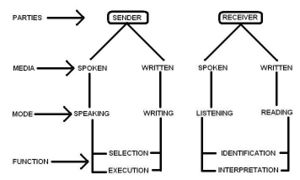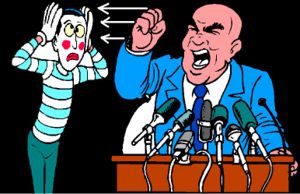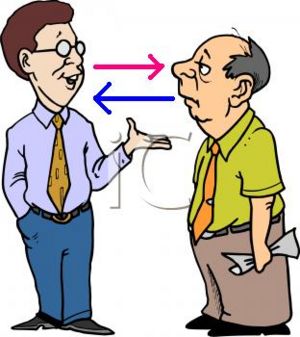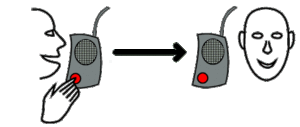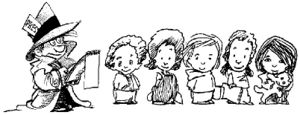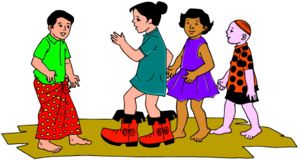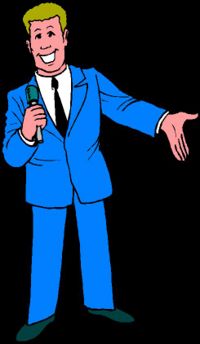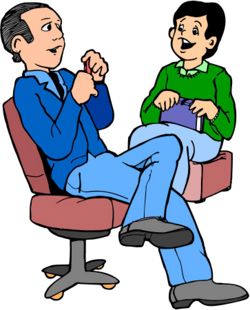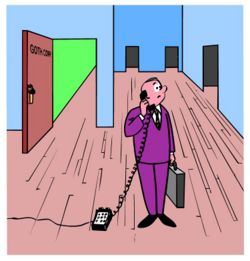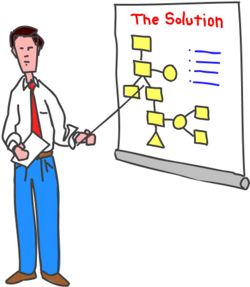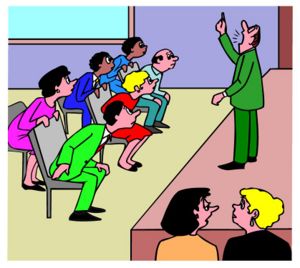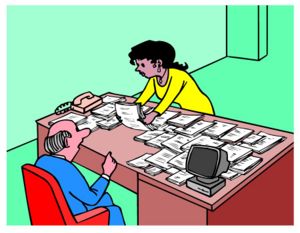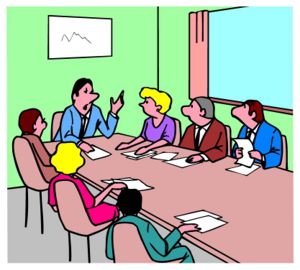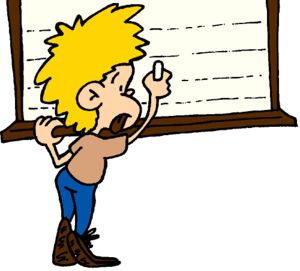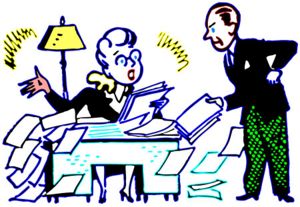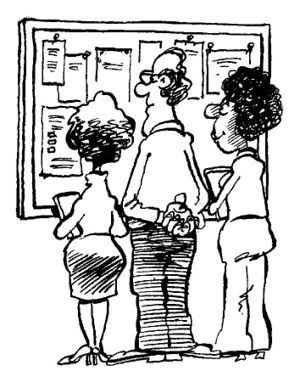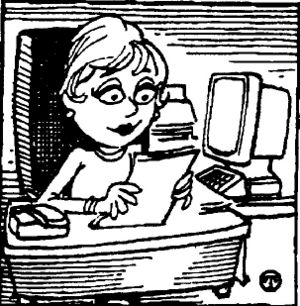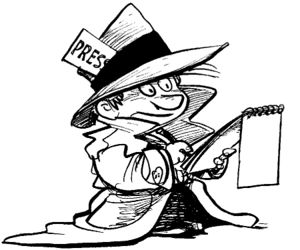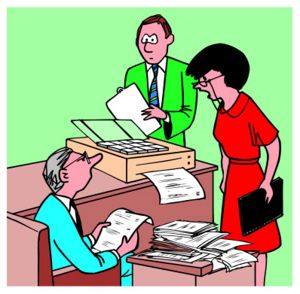INTRODUCTION TO COMMUNICATION

|
INTRODUCTION TO COMMUNICATION |
- Introduction
- Objectives
- Communication and its Process
- Components of Communication
- Barriers to Communication
- Patterns of Communication
- One Way Communication
- Two Way Communication
- One to One
- One to Many
- Many to One
- Types of Communication
- Verbal
- Oral
- Written
- Non-verbal
- Verbal
- Let Us Sum up
- Glossary
- References and Further readings
- Answers to Self-Assessment Questions

|
Introduction |
Have you ever felt the messages you convey are not communicated properly or have you ever felt guilty of not conveying the message as it wants to be conveyed? If so it is because of your weakness towards communication skills. Apart from the basic necessities, you need to be equipped with habits for good communication skills, as this is what will make you a happy and successful social being. In order to develop these habits, you need to first acknowledge the fact that communication skills need an improvement from time to time. The only constant in life is change, and the more you accept your strengths and work towards dealing with shortcomings, especially in the area of communication skills, the better will be your interactions and the more your social popularity. Thus the present unit enables you to get a detailed picture of the need and importance of developing communication skills and feel confident and empowering to face any type of situation in life.
| 1 COMMUNICATION AND ITS PROCESS |
We use ‘communication’ usually to mean speaking or writing or sending a message to another person. Communication is really much more than that. It involves a number of choices and decisions but being natural and unnoticed in informal situations. In formal situations, our communication needs to be more effective and carefully chosen, that is, we need to plan our communication. Here comes the question what is Communication or how communication could be defined?
Communication may be broadly defined as the process of meaningful interaction among human beings. More specifically, it is the process by which meanings are perceived and understandings are reached among human beings. – D.E. McFarland.
Looked at more closely, what is essential for communication to occur is the cooperation between two parties, one active or at the giving end and the other passive or at the receiving end.
The sender selects appropriate symbols to suit the situation and realizes the meaning through speech or writing depending upon the socially regulated requirements or self-perceived needs. At the receiving end the symbols are identified and identification obviously implies recognition and realization of meaning through the interpretive process.
The process of Communication may be summarized as follows:
Communication is thus a network of interactions and naturally the sender and the receiver keep on changing their roles.
Another aspect of communication is the deployment of a code consisting of arbitrarily evolved symbols and the determination of the appropriateness of their use in given situations, leading to the emergence of diverse communication patterns. A number of factors come into play in shaping these patterns. In fact, communication is often but not always momentary. At times communication is a cumulative process that starts before the actual communicative event takes place and continues after it has occurred. Thus communication therefore must acquire a true perspective of not only the present requirements of the situation but also its relationship with the past and its impact on the future.
| 2 COMPONENTS OF COMMUNICATION |
Communication is a process where one sets out to convey a message to another person through the medium of words, gestures and / or pictures. The process of conveying the message is fulfilled only when the person receiving it has understood the message entirely.
The cycle gives the process of communication. It would be observed that the entire event takes place within a common frame of reference, also called as communication environment. The source refers to the point of origin of a message which is encoded by the sender and transmitted through the channel to the receiver. The receipt of the message exercises an impact in communication environment leading to some result. The observance of the result by the sender is called ‘feedback’.
During feedback the direction of the communication process is reversed. When providing feedback, the original receiver goes through the same process as did the original sender with the same factors influencing the receiver. The receiver may use the same channel / a different channel for feedback.
The message sent is not the same as the message received. It is also to be noted that all the messages do not produce the intended result. Thus, the success of communication is measured in terms of not only the effective transmission of the message but also the achievement of the intended result.
| 3 BARRIERS TO COMMUNICATION |
Communication is not always successful. Several things can prevent the message from reaching the intended recipient or from having the desired effect on the recipient. There may be some fault in the communication system which may prevent the message from reaching. Some of these defects are in the mechanical devices used for transmitting – medium, some are in tools we use for communication – language, and some are in nature of persons who are engaged in communication – the sender and recipient / receiver. It can be divided into three broad groups: Listening, Speaking and Environmental.
Listening barriers:
- Interrupting the speaker
- Not maintaining eye contact with the speaker
- Rushing the speaker to complete what he/she has to say
- Making the speaker feel as though he/she is wasting the listener's time
- Being distracted by something that is not part of the ongoing communication
- Getting ahead of the speaker and completing his/her thoughts
- Ignoring the speaker's requests
- Topping the speaker's story with one's own set of examples
- Forgetting what is being discussed
- Asking too many questions, for the sake of probing
Barriers while speaking:
- Unclear messages
- Lack of consistency in the communication process
- Incomplete sentences
- Not understanding the receiver
- Not seeking clarifications while communicating
Environmental barriers include:
- An individual's subjective viewpoint towards issues/people, which leads to assumptions
- An emotional block, which can lead to an attitude of indifference, suspicion or hostility towards the subject
- An emotional block or bias that is based on a third party's view point, or on what you have read/heard
- Words can have different meanings to different people, thus blocking communication
- Use of negative words
| 4 PATTERNS OF COMMUNICATION |
Communication can be one way and two way process. Both the patterns are followed in various circumstances effectively and efficiently by the people in the society. There is also horizontal and vertical movement of information from one source to another. The horizontal flow keeps individuals of the same status and peer groups informed of what others are doing and what is expected of them. The vertical communication is both downward and upward. It is essential to have both upward and downward movement since mere downward flow is like talking to a person continuously without giving him a chance to respond. In such situation the pattern will be as given in One Way communication and when mutual chance is given to the listener, the pattern is similar to two way communication.
| ONE WAY COMMUNICATION |
- A person always instructing another
- Always speaking without giving chance for the other to respond
- Always directing the other to do something
- Conveying some information to other and so on.
| TWO WAY COMMUNICATION |
- A person named X instructs Y
- Y reports to X
- X speaks to Y
- Y responds to X and so on
This two way communication could be classified into two: One to many and many to one.
(a)One to One Communication
In one to one communication there is only one sender and one receiver wherein the sender passes on some information to the receiver and the receiver passes on to the sender in return. Such kind of communication is one to one communication in two way communication pattern.
(b)One to Many Communication
In one to many communication there is only one sender and one or more receiver wherein the sender passes on some information to all the receivers and each of the receiver passes on / replies to the sender in return. Such kind of communication is One to Many Communication in two way communication pattern.
(c)Many to One Communication
In Many to One Communication there are several senders and one receiver wherein all the senders pass on some information to the receiver and the receiver replies for them. Such kind of communication is Many to One Communication in two way communication pattern.
It is obvious that conveying all information to everybody would be a meaningless exercise. For proper functioning of a Communication system the following questions should be asked and the answers constantly reviewed:
- What information is to be conveyed?
- Who requires it?
- What should be its form?
- What techniques of dissemination should be used?
- What technological aids should be used?

|
Self-Assessment Questions (SAQs) -4 |
ANSWER THE FOLLOWING
| |
| 5 TYPES OF COMMUNICATION |
Communication takes place by exchanging symbols to describe our ideas and experience. Language is a common symbol system which is used for sharing our experiences with others. We can also use other symbols like pictures, colours, signs and sounds to communicate. We do communicate a number of things by our facial expressions, movements, clothing and so on, though we do not speak. Thus communications through words are called Verbal Communication; communications through symbols are called non-verbal communication.
| VERBAL COMMUNICATION |
We use verbal communication for most purposes. Verbal communication may be oral or written.
a)ORAL COMMUNICATION:
Oral Communication is more natural and immediately available for responding to a comment / statement. In natural and informal situations, we speak readily without hesitation in order to communicate with others; but in a formal and official situation, many persons feel nervous and cannot speak easily. It needs training, practice and skill to speak effectively in a formal situation.
Oral communication requires the presence and simultaneous attention of both the persons. Need for personal presence makes certain demands on the skills of both; each must be able to respond to the body language of the other, and must be able to make immediate response to what the other says.
Oral communication occurs in situations like conversations, telephone talk, interviews, presentations, group discussions, and meetings.
FACE-TO-FACE CONVERSATION:
Oral communication is best when it is face-to-face. A face-to-face setting is possible between two individuals or among a small group of persons at an interview, or in a small meeting, where both the sender and the receiver could see each other and communicate. Communication can flow both ways in these situations. Here, an immediate feedback, which gives clarification is possible. Besides, a face-to-face setting offers a rich communication experience owing to the presence of the living personality whose voice, tone, expressions and movements add significance to the words.
TELEPHONE TALK:
Telephone talk depends entirely on the voice and its quality. It does not have the advantage of physical presence or facial expressions since there is no option to look at others physical appearance at live. Clarity of speech and skillful use of voice are important in this kind of communication. There can be confusion between similar sounding words like “pale” and “bale”, or between “light” and “like”. Names and addresses communicated on the telephone are sometimes wrongly received. It is therefore customary in telephonic conversation to clarify spellings by saying G for God, P for pen etc.
PRESENTATION:
It has a face-to-face setting. It is a formal, well-prepared talk on a specific topic, delivered to knowledgeable and interested audience. It looks odd and slumbers if the presentation is not welcomed by the audience to which it is presented. At times a touch of humour always enriches the presentation. The purpose for such kind of communication is to give / pass on the information rather than making them dull and sleepy.
PUBLIC SPEECH:
A public speech or lecture also has a face-to-face setting, but here the space between the speaker and audience do matters. This distance increases as the audience gets larger, as in an open air public meeting. This way of communication much depends on the speaker’s skill in using gestures and using the microphone in the correct order.
INTERVIEW:
An interview is a meeting at which one person or panel of persons, who are the interviewers, discuss a matter with another person or ask questions of another person, who is the interviewee. The purpose is, usually to assess, to judge whether it would be worthwhile to enter into a relationship with the other. An interview is of structured question and answer type of communication.
MEETING:
Usually a meeting involves many persons; there is a chair person or leader who leads and guides the communication and maintains perfect order. There is a fixed agenda, that is, a list of issues to be discussed at the meeting. Meetings are of many types, from the small committee meeting consisting of three or four persons to the large conference or the share holders’ meeting. This type of oral communication is backed up by note-taking and writing up of minutes.
b)WRITTEN COMMUNICATION:
Written communication is used for many purposes. Many types of documents are required for official work. Letters, circulars, memos, notices, reports and minutes are constantly prepared and exchanged in and between organizations. All has a format and layout which is fixed by custom.
Letter:
Letters are the most widely used form of written communication. They are used mostly for external communication. A letter has a complex lay-out which has to be carefully followed.
Memo:
Memo, short form of memorandum, is an informal message between members of an organization and generally relates to daily work. Information or instructions can be conveyed by a memo. A memo may or may not be signed.
Notice:
A notice is used in order to communicate the same message within an organization. It is the most common method of mass communication, within an organization. It should be short, its language should be simple and the type should be large and well spaced for easy reading.
Circular:
A circular is a detailed document giving information, instructions or orders on a specific matter. A circular has a number and date for reference, and is signed by the authorized signatory of the issuing office. They are generally issued by government department and other official bodies like government departments, councils, universities and Head Offices of organizations.
Report:
A report is a document prepared by an individual or a committee entrusted with the task of collecting information on a given subject. It requires careful research, collection of data and presentation of the findings, conclusions and recommendations. Reports are of varying length and may be anything from two pages to a full book dived into chapters.
Minutes:
Minutes are the written record of decisions taken at a meeting. Different bodies have their own convention of recordings the discussion and the decisions. Minutes may be written by hand or typed and pasted in minute books, or typed and filled in a minute file. Minutes are a legal document.

|
Self-Assessment Questions (SAQs) -6 |
| TRY TO ANSWER IN SHORT 1. How should a notice be written? 2. What is a circular? 3. When will you prepare a report? 4. What are Minutes? Why are they written? | |
| NON-VERBAL COMMUNICATION |
Non-verbal methods of communication can be consciously created and used with both written and oral communication. Graphics of all kinds can enrich the message presented in a document or in a speech. Pictures, maps, charts, diagrams, sketches, cutouts, models, etc., communicate more effectively quality vice and clarity vice than verbal communication. Apart from these symbols we consciously may convey the meaning by facial expressions, gestures, eye contact, clothing, posture, etc. These are called body language. They do communicate more than verbal communication.
Non-verbal communication occurs even when there is no verbal communication. Going by the road side, on seeing the no parking board, we are not parking our vehicles near it. Rather a NSS volunteer person when suggesting not to leave our vehicle in that place, often we ignore him. Thus we say that non-verbal communication, by way of a picture here, communicates something more than what is communicated through verbal communication. Henceforth, a good understanding of non-verbal communication will entitle a person or persons to communicate more effectively than what is conveyed through verbal communication.

|
Results |

|
Glossary |
- Barriers - Hurdles / Obstacles
- Perceived - Understood
- Deploy - Organize
- Arbitrary - Arranged without any reason

|
Answers to SAQs |
Self-Assessment Questions – 1
- Speaking or writing
- Choices & decisions
- Informal
- Planning
- Interaction
- Co-operation
- Receiving
- Spoken & Written
- Recognition & realization
- Identification & Interpretation
- Sender & Receiver
- Replies
- Speaking & Writing
- Momentary
- Present, Past & future
Self-Assessment Questions – 2
- Words, Gestures & Pictures
- Noise
- Feedback
- Reversed
- Effective transmission & intended results
- Listening
Self-Assessment Questions – 3
- One way & Two way
- Upward & downward
- One way
- Two way
- One
- One sender & Many receiver
- Many to One
Self-Assessment Questions – 4
- The following questions are to be questioned for proper functioning of a communication system:
- What information is to be conveyed?
- Who requires it?
- What should be its form?
- What techniques of dissemination should be used?
- What technological aids should be used?
- What information is to be conveyed?
Self-Assessment Questions – 5
- Verbal & Non-verbal
- Words / vocabularies
- Oral or written
- Oral / verbal
- Physical presence
- Telephonic
- Face-to-face
- Humour
- Increases
- A chair person / A Leader
- Written
- Informal
Self-Assessment Questions – 6
- A notice should be short, its language should be simple and the type should be large and well spaced for easy reading.
- A circular is a detailed document giving information, instructions or orders on a specific matter. A circular has a number and date for reference, and is signed by the authorized signatory of the issuing office.
- A report is a document prepared by an individual or a committee entrusted with the task of collecting information on a given subject. It requires careful research, collection of data and presentation of the findings, conclusions and recommendations.
- Minutes are the written record of decisions taken at a meeting. They are prepared carefully and undersigned and kept as a record / legal document for future reference.
Self-Assessment Questions – 7
- Non-verbal
- Non-verbal
- Facial
- Body
- Effective

|
References and Further Readings |
- Adler, R. B. and Rodman, G. Understanding Human Communication. Chicago; Holt, Rinehart, and Winston. 1991
- Devito, J. A. Human Communication: The Basic Course. New York; HarperCollins. 1994
- Mohan, Krishna & Banerji, Meera. Developing Communication Skills. Mac Millan Publichations, New Delhi. 2004
- Rai, Urmila & Rai, S.M. Essentials of Business Communication Skills for Engineers. Himalaya Publishing House. Mumbai. 2002



